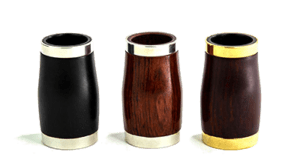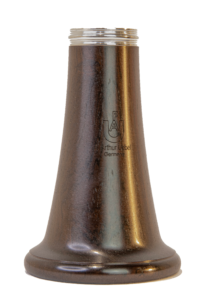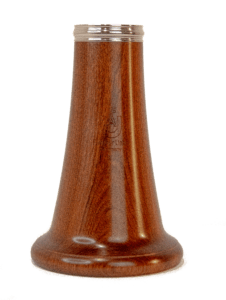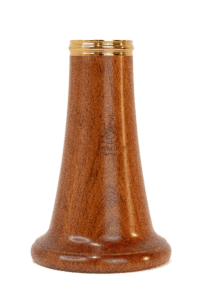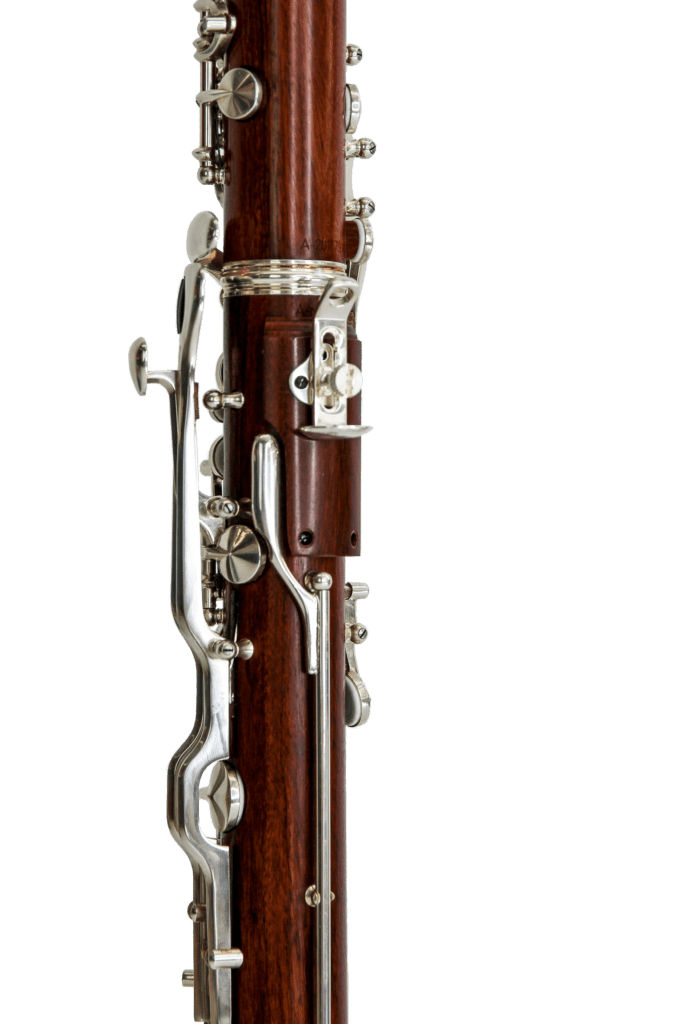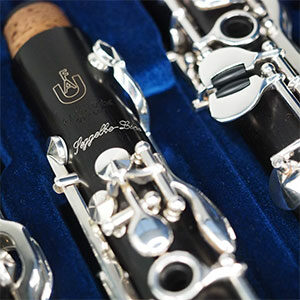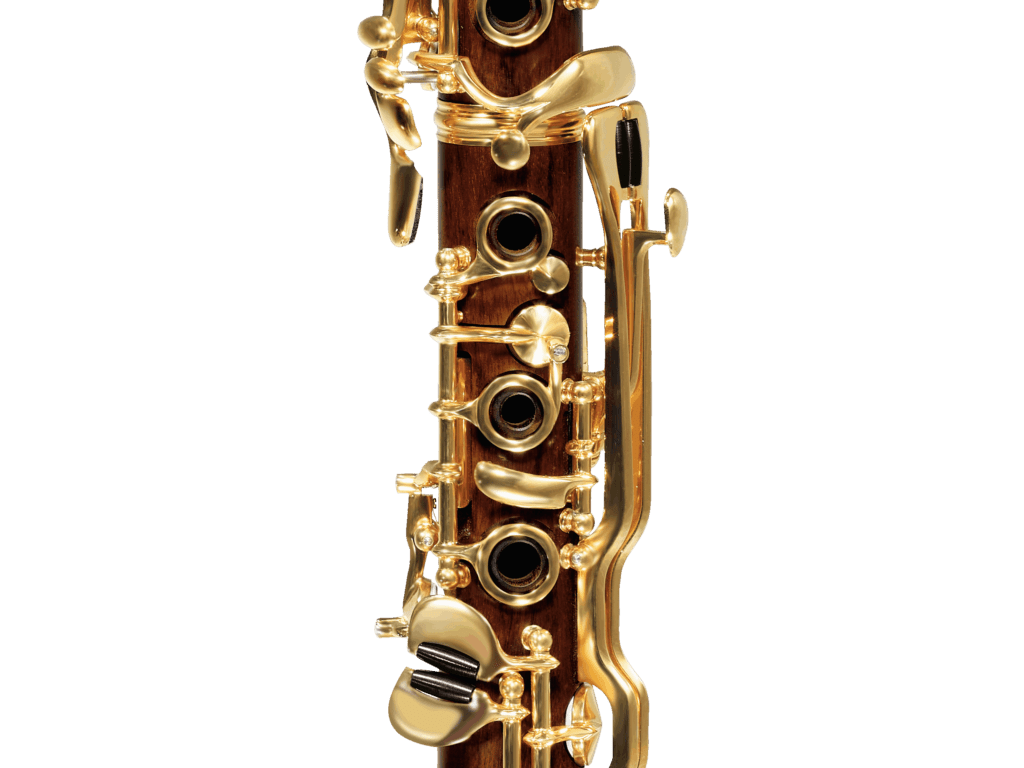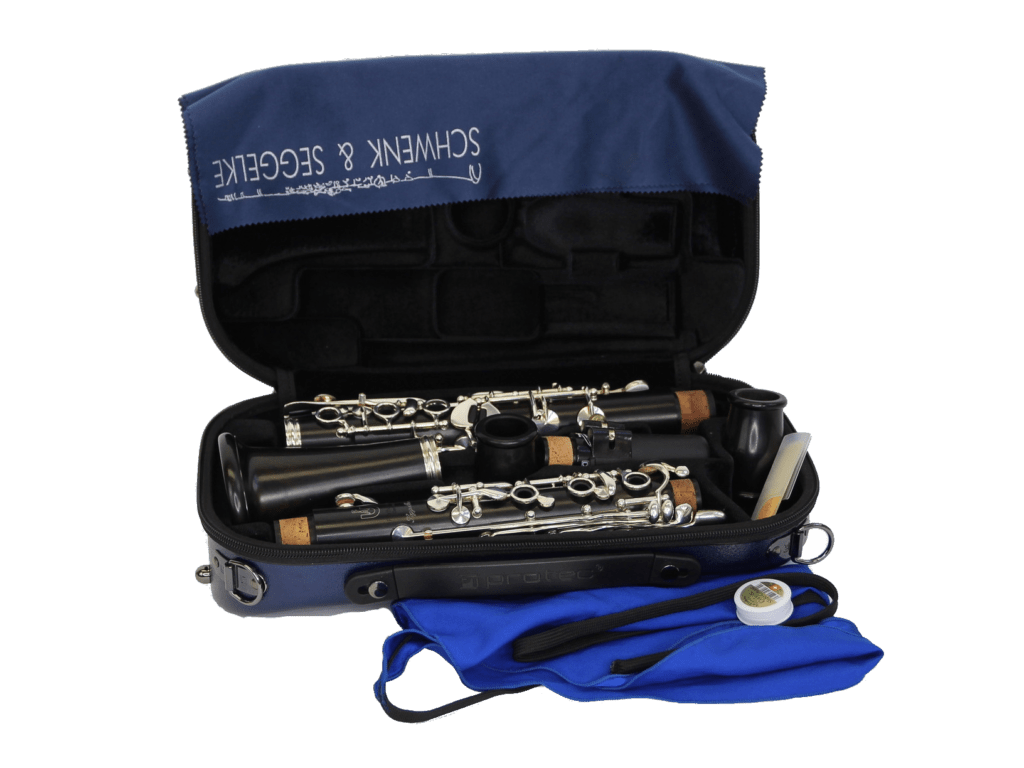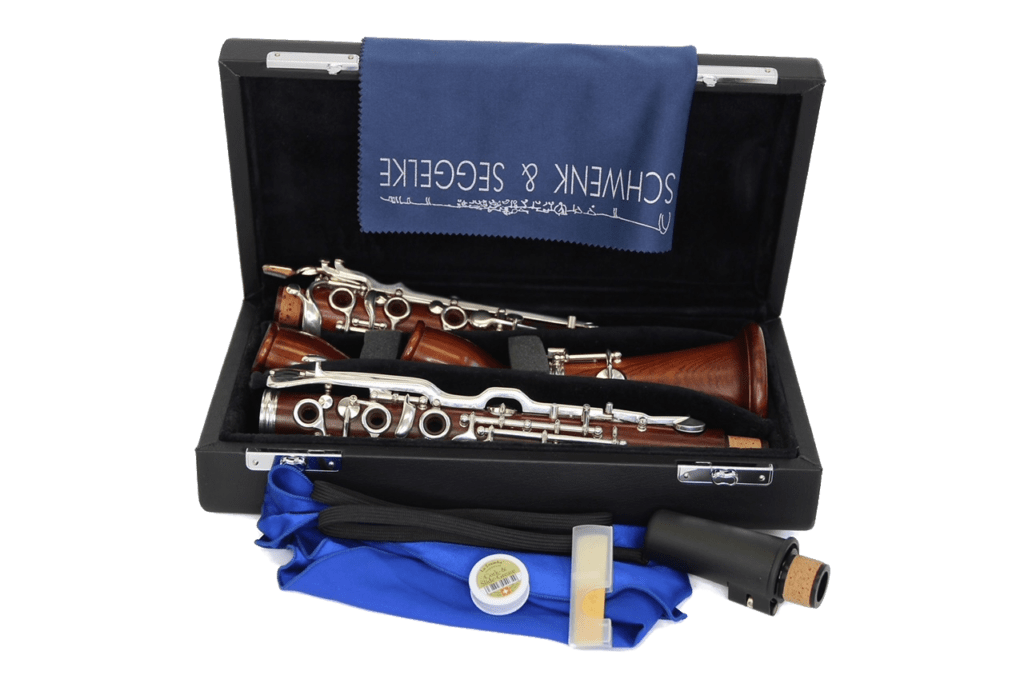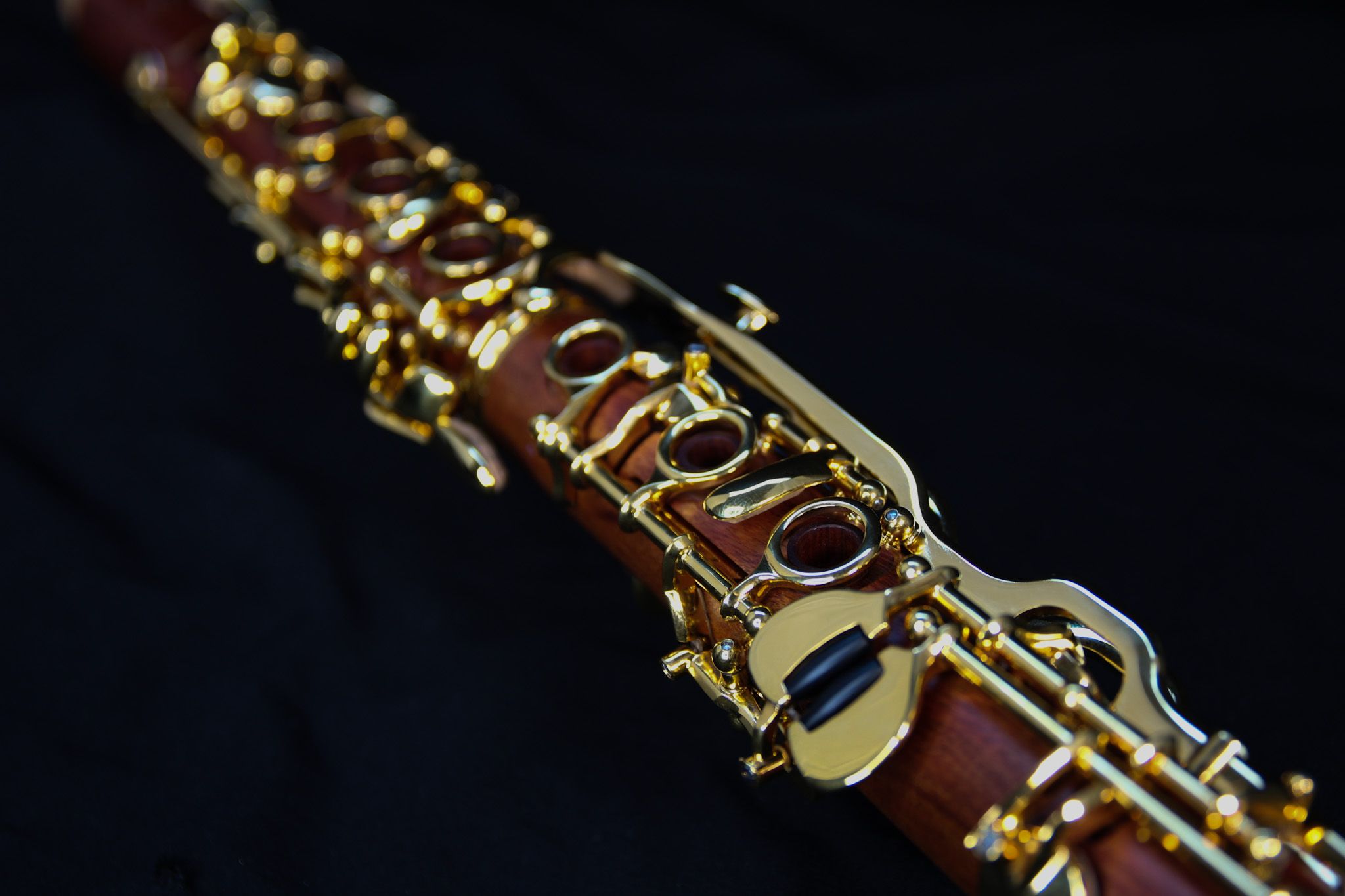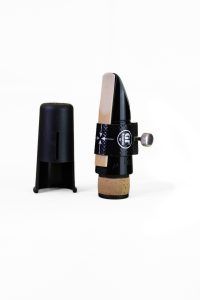FAQs
Frequently asked questions
- Accessories
- Schwenk & Seggelke
- Instrument selection
- Instrument purchase
- General
- Maintenance and care
- Seggelke-Line
- Shop
For the Seggelke-Line, barrels with two wooden rings and a slightly thicker belly has been proven to be the ideal design. The Vienna model comes with barrels with two metal rings.
The bell is of particular importance on the clarinet; its length and shape, as well as the thickness of the material, influence the response, intonation and timbre of the entire instrument. Jochen Seggelke, together with the company F. A. Uebel, has developed a special bell for the Seggelke-Line clarinets, so that the sound is carried into the room as round and focused as possible.
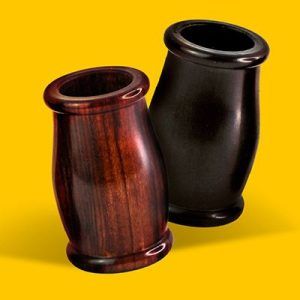
Of course that is possible. Find out more about our range on the corresponding pages: barrels, bells, mouthpieces, ligatures, necks.
This is possible in many cases, please feel free to contact us.
With Model 2000, for example, we also offer Es and F levers as retrofits from the outset. A bell mechanism can also be retrofitted to Seggelke clarinets.
Yes, but: the tenon diameter differs on classic French mouthpieces compared to a German mouthpiece. Therefore, you need either a correspondingly adapted barrel, which you are welcome to order from us. However, it is also possible to adjust the tenon of the mouthpiece accordingly.
Alternatively, you can get mouthpieces that can be played with French reeds but have the tenon adapted to German barrels (like BD5D, M30D or B40D from Vandoren).
This is possible after consultation. The adult education center of the city of Bamberg also offers public guided tours.
This is possible for one week by prior arrangement. We charge a fee for processing, shipping and insurance. You are also welcome to contact our partners, who have small quantities of our accessories in stock.
You may configure your instrument according to your wishes – the best way to do this is to use our configurators. We would also be happy to advise you on this. We can prepare a quotation based on your request and send it to you together with the prices. As soon as the order has been confirmed by you with a down payment, we can start production.
Instruments of the Seggelke-Line are normally directly available. These are to be paid directly after reception of the invoice.
Instruments of the brand Schwenk&Seggelke are built especially for you. The Payment for the instrument is made in three installments:
- To confirm the order, an initial deposit of 30 percent of the total amount is due. Only then can we start production.
- About halfway through production, you will receive an interim invoice for a further 30 percent.
- Upon collection or delivery, the final payment is due with the remaining 40 percent.
The delivery time gives you the opportunity to take care of the financing over a longer period of time. At the same time, we can maintain our current production.
Further information can be found in our General Terms and Conditions.
We ship accessories that are in stock within two days.
Clarinets are usually ready for dispatch within one week. Each instrument is carefully checked again before dispatch. In case of major delays, we will contact you by e-mail. As soon as we have handed over your clarinet for shipping, you will receive a shipping confirmation plus tracking number from us via email.
We offer instruments for every age and skill level, depending on your financial situation and requirements. The Seggelke-Line instruments offer a more affordable option. It may also be worth taking a look at our store ! Please feel free to contact us!
For French fingering: Model 1000 Grenadilla as shown by default in the configurator.
For German fingering: select model 2000, grenadilla and reduce the number of keys displayed to a mechanical configuration you are used to.
The Seggelke-Line instruments offer a more affordable option. It’s also worth taking a look at our store!
We understand that every musician has unique requirements and preferences when it comes to their instrument. Whether through its material, shape or color: your clarinet can be just as individual as you wish! Here you can read about the customization options we offer.
If your request cannot be selected in the configurator, please send us an e-mail with your ideas, for example using our contact form.
Please contact one of our service partners and dealers abroad.
You can find a list on our dealer page.
We have partner workshops in many countries where you can buy instruments from us. You are also welcome to visit us in Bamberg. Please make an appointment for this.
Please contact us by e-mail or telephone or visit us – preferably by appointment(see Contact). We recommend our international partners to customers from abroad. We are also represented at various trade fairs and organize our own in-house exhibition every spring. You can find the dates under News.
Unfortunately, this is not possible. Quite deliberately, we leave off parts of the mechanical options,which rarely improve the sound and response of a clarinet. The 21 keys allow for all important fingering options while at the same time being both economical and lightweight. Only through this standard pre-configuration can we achieve such a good price-performance ratio.
The quality of a clarinet is not defined by the number of keys. But its price is. That is why we have devised a system that allows you to put together a handcrafted clarinet according to your requirements and budget. Try our configurator!
“Wiener Modell” and “Wiener Bohrung” are not protected fixed terms. Each instrument manufacturer uses a different bore size and different instrument keyworks.
In our configurator, you can select our Vienna bore variant. This corresponds to our wide bore, but has different body dimensions.
The Vienna model includes some mechanical options related to the historical characteristics of this instrument as it was in use in the 1950s in Vienna. The range of mechanical options is therefore limited. As standard, our model includes the compensation key for e/b” on the upper joint.
You can also play our wide German bore with a Vienna mouthpiece. Here you can also use all the options of the configurator and take full advantage of the intonation improvements that can be achieved.
Quite deliberately, we reduce the keywork of the Seggelke-Line down to 21 keys, which still allows the playing of all important combinantions.
The buttons and key levers and their positions were designed by Jochen Seggelke together with F. A. Uebel GmbH to ensure optimal accessibility for as many hand sizes as possible. Spring tensions and keys are precisely checked and balanced during final assembly.
On the A clarinet, a bell mechanism can be added to optimize the intonation of low E and low F. This is operated by the right thumb. To ensure that the pusher is easily accessible, the thumb rest is mounted on a wooden plate. This opens up the right hand and provides an ergonomic support while holding the clarinet.
With the Seggelke-Line we offer preconfigured instruments, which are produced by F. A. Uebel GmbH according to our specifications exclusively for Seggelke clarinets. Here in Bamberg, the clarinets receive their final bore, all tone holes are reworked and the keys are adjusted. Finally, the clarinets are play-tested and checked by our master craftspersons. Additionally we select matching S&S barrels. We recommend mouthpieces that have been reworked by S&S.
We can only provide instruments to a limited extent. Please feel free to contact us – the sooner the better.
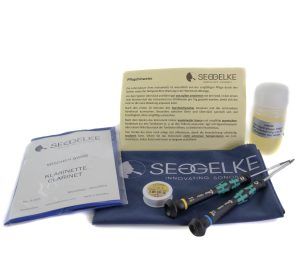
You will receive a case of your choice, two barrels per instrument, a mouthpiece, a GF ligature, swab, an oil wiper, linseed oil, tenon grease, cleaning cloth and a Allen key for adjusting screws.
We offer the Seggelke-Line with a traditional German bore or a Vienna bore
The German bore of the Seggelke-Line corresponds to the narrow bore of the clarinets of our brand “SCHWENK & SEGGELKE Bamberg“. It has a centered, throaty sound.
Our Vienna bore goes back to the clarinets traditionally played there since 1900. This is drilled much wider than the German one and also requires longer barrels. The Vienna bore sounds particularly soft and velvety-round in combination with the typical Vienna style mouthpiece and reed.
Within Germany
Orders containing only accessories with small dimensions (e.g. reeds, mouthpiece cushions) will be sent as a letter. For postage and service we charge 3,57 Euro incl. 19% VAT.
Orders containing accessories in larger dimensions (e.g. mouthpieces) and instruments will be shipped as a package for 5,95 Euro incl. 19% VAT.
Starting at of 250 Euro purchasing value, the shipping is free of charge.
Shipping abroad
The following prices do not include the applicable sales tax of the recipient country:
Orders containing only accessories with small dimensions (e.g. reeds, mouthpiece cushions) will be shipped as merchandise mail. For postage and service we charge 6,20 Euro plus value added tax.
Orders containing accessories in larger dimensions (e.g. mouthpieces) and instruments will be shipped as a package. The price depends on the particular zone:
- Zone 1 (Belgium, Denmark, Luxembourg, Netherlands, Austria, Czech Republic): 12,00 Euro plus value added tax.
- Zone 2 (France, Italy, Poland, Slovakia, Slovenia, Hungary): 16,00 Euro plus value added tax.
- Zone 3 (Finland, Ireland, Liechtenstein, Portugal, Sweden, Spain, Cyprus): 20 Euro plus value added tax
- Zone 4 (Bulgaria, Greece, Norway): 25 Euro plus Value added tax
Instruments made of grenadilla, silver plated mechanics
- GSD => Grenadilla, silver plated, German bore
- GSW => Grenadilla, silver plated, Vienna bore
- GSD+ => Grenadilla, silver plated, German bore, with bell mechanism (only available as A clarinet)
- GSW+ => Grenadilla, silver plated, Vienna bore, with bell mechanism (only available as A clarinet)
Mopane instruments, silver plated mechanics
- MSD => Mopane, silver plated, German bore
- MSW => Mopane, silver plated, Vienna bore
- MSD+ => Mopane, silver plated, German bore, with bell mechanism (only available in A)
- MSW+ => Mopane, silver plated, Vienna bore, with bell mechanism (only available in A)
Mopane instruments, gold plated mechanics
- MGD => Mopane, gold plated, German bore
- MGW => Mopane, gold plated, Vienna bore
- MGD+ => Mopane, gold plated, German bore, with bell mechanism (only available in A)
- MGW+ => Mopane, gold plated, Vienna bore, with bell mechanism (only available in A)
It is not possible to give a general answer here, as this depends on the type of instrument and its condition. Therefore, we can only provide a cost estimate after viewing the instrument.
The minimum of work includes: Dismantling the mechanics, cleaning the wood and tone holes, oiling the wood, cleaning and polishing the keys, making the mechanics playable. If required, we can replace cork tenons, damping corks and pads. Then assemble and play the instrument.
The tonewoods we use differ in terms of density, among other things. This influences how strongly the overtones sound, i.e. whether the fundamental tones or the treble tones are emphasized or attenuated – similar to how you can adjust an equalizer on loudspeakers. You can read more about our tonewoods here.
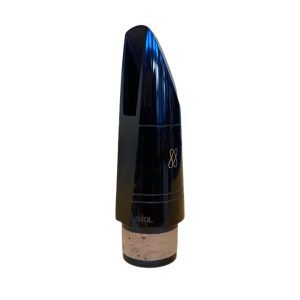
Here, the inner bore is reworked, the edges are checked and reworked if necessary. It is also possible to adapt the tenons to other systems. Please visit our mouthpiece page.
Send us an e-mail with your specific request. You can reach us by telephone from Monday to Friday from 8-12 o’clock.
For a personal visit to our workshop in Bamberg, please make an appointment in advance so that we can take the best possible care of your request.
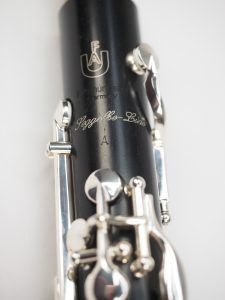
The most common clarinet is the B-flat clarinet. Its “big sister”, the A clarinet, sounds a half-tone lower and is often used for clarinet concertos or in orchestral music.
Our leather pads is made of goatskin without any additional surface coating. The core is made of silicone and therefore does not absorb moisture. This ensures that the pad retains its shape for a long time.
The quartz resonance pads, on the other hand, have better sound and resonance characteristics. We use them in combination with leather pads on large open tone holes and on some keys on the upper joint to prevent excessive moisture in the bore.
Narrow bored instruments have more blowing resistance and are easier to play with a more open reed-mouthpiece combination. Instruments with a wider bore, on the other hand, have less blowing resistance and can be played with a more closed reed-mouthpiece combination.
We offer the usual two-year warranty on materials and workmanship. If you have any problems, please contact us as soon as possible!
All mouthpieces offered by us are provided with the bore of S&S and are individually optimized. We use our 1 mm thick special silicone mouthpiece cushions. These reduce the vibration on the teeth, and also relax the jaw.
We supply Seggelke-Line clarinets with mouthpieces matching the body bore: the German bore comes with Vandoren D20 (German facing), the Vienna bore comes with PA by J. Gleichweit (Vienna facing).
The mouthpiece facing decides which reeds fit. We recommend the following combinations:
- German facing: German reeds e.g. G cut by JSB or V21 German by Vandoren
- Vienna facing: Vienna cut by Peter Leuthner
You can also get these reeds from us.
We recommend ligatures by GF.
In the configurator you will find all possible combinations of tuning, fingering, construction material and mechanic features.
Payment is possible via PayPal or cash in advance. Payments by invoice are possible only from the third successful order with us. Until then, prepayment applies.
Of course, we will remain your point of contact for questions about accessories, care and repairs after the purchase. We recommend a regular inspection by appointment – preferably annually. In emergencies, we will also take care of repairs as quickly as possible and may also be able to provide a replacement instrument.
We do not use tropical wood. Our wood comes from certified cultivation areas in East Africa, South Africa, France and Turkey.
You can use any cold-pressed linseed oil to oil the inner bore, for example oils from grocery stores. Important: Do not use varnish, as this closes the pores of the wood! You can find out more about oiling in our care tips and clarinet hacks.
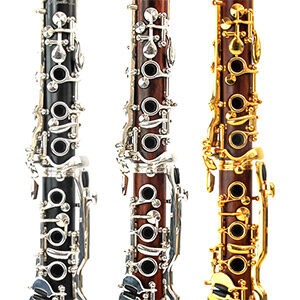
For beginners and advanced players, we recommend our GSD and MSD clarinets. These are optimal for playing alone as well as in a group, ensemble or orchestra. These clarinets are provided with our “German bore” and harmonize well with other clarinets made in Germany. Thus, playing music together gets wonderfully easy.
The MGD model meets the same criteria – the 4k gold-plated mechanics give the instrument a warmer sound. The instruments made of mopane generally have a softer, warmer sound than those made of grenadilla.
The GSW, MSW and MGW instruments have a wider bore (Vienna bore). Therefore, they require more resistance in the reed-mouthpiece combination and then sound particularly round and balanced. As a result, they are more suitable for players who have already gained experience or for players who come from the Austrian playing tradition.
We manufacture basset horns and bass clarinets with the German and French fingering systems, but with a German bore. This is narrower than French bores from other manufacturers, but as with French instruments of this design, it is completely cylindrical.
We start with our handcrafted individual production of clarinets of the brands Schwenk&Seggelke and JSB clarinets only after the order has been confirmed. A lot has happened in the storage of the wood for example. However, intermediate intermediate storage periods are always necessary to allow the wood to settle.
In addition to the production of new instruments, we also take intensive care of the servicing of instruments from our company. There may also be capacity bottlenecks in the work process, as you are receiving a handmade, i.e. man-made, instrument.
Oiling the clarinet makes sense if it has already been oiled during the construction process and no other impregnation is used (as is the case with us). The amount of oil required depends on the type of wood: grenadilla requires less, mopane a little more and boxwood quite a lot.
We use linseed oil because it polymerizes, i.e. it dries and builds up long-chain structures in the process – it is not resin-free! The background to this is that the breath condensate is in the acidic range and therefore the fats and oils – such as the essential oil components of natural wood – are virtually “digested”. Therefore, it must be oiled again and again. This prevents dehydration and cracking – similar to the way human skin is creamed to prevent dehydration and chapping.
You can find instructions for oiling here in our Clarinet Hacks:
The “classic” clarinet wood is grenadilla wood from Mozambique and Tanzania. The wood has one of the highest densities. Its natural color, which alternates between black-purple and black-dark red, is left without additional color treatment. To protect the wood from moisture, we treat it with linseed oil.
Acoustically, the wood is extremely appealing: the fundamental tone and trebles sound less strong, but the mids are well conveyed. The result is a centered, compact sound.
Our alternative to grenadilla is mopane wood (from Zambia/Zimbabwe). We have gained experience with this material at Schwenk & Seggelke clarinets since 2007.
In density and weight it is very similar to grenadilla, but has a different grain and color. The reddish base color of Mopane is interspersed with fine black stripes. It is interesting to note that the wood darkens with time. This very vividly colored wood has special sound characteristics: it sounds stronger in the room than grenadilla, i.e. more forward, which influences the playing feel. It also sounds a bit warmer and offers greater dynamic range.




